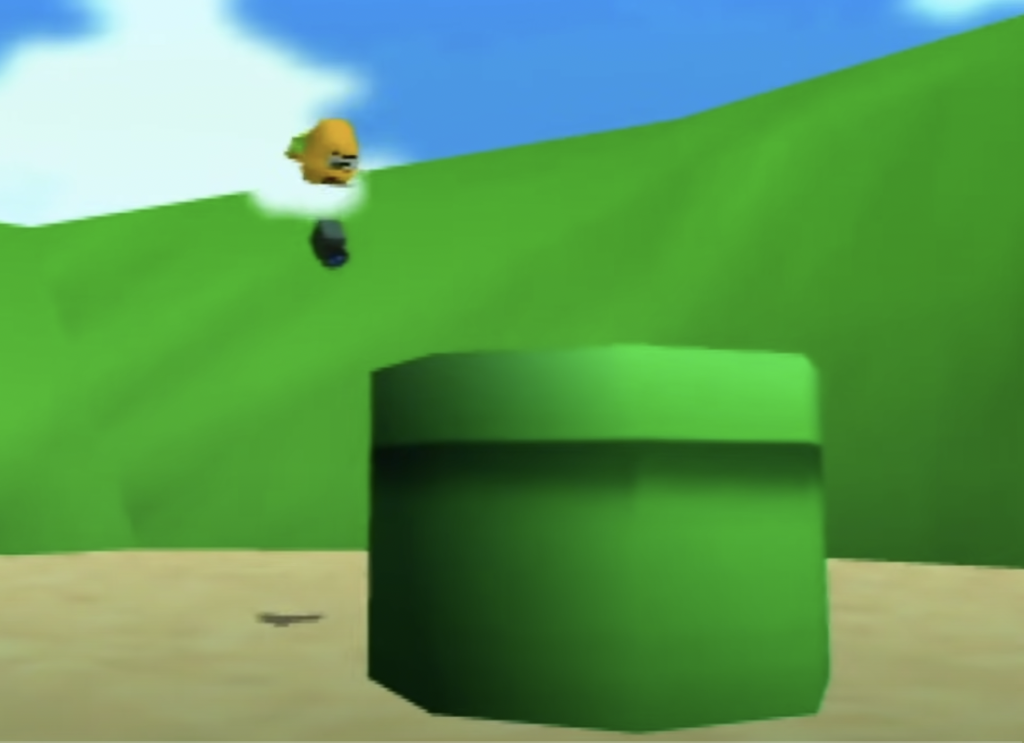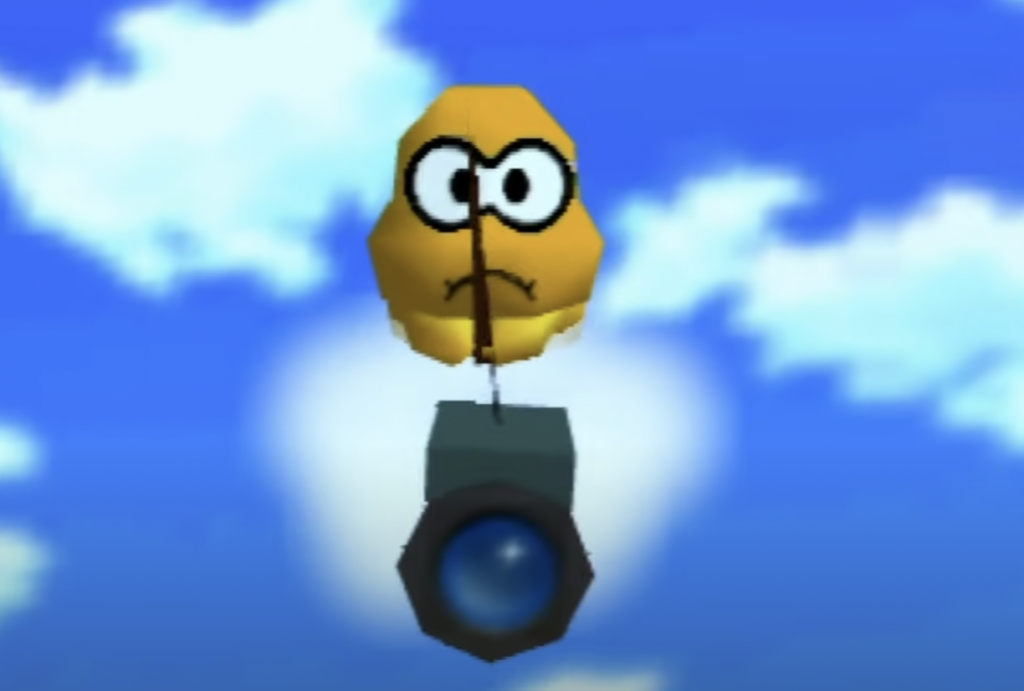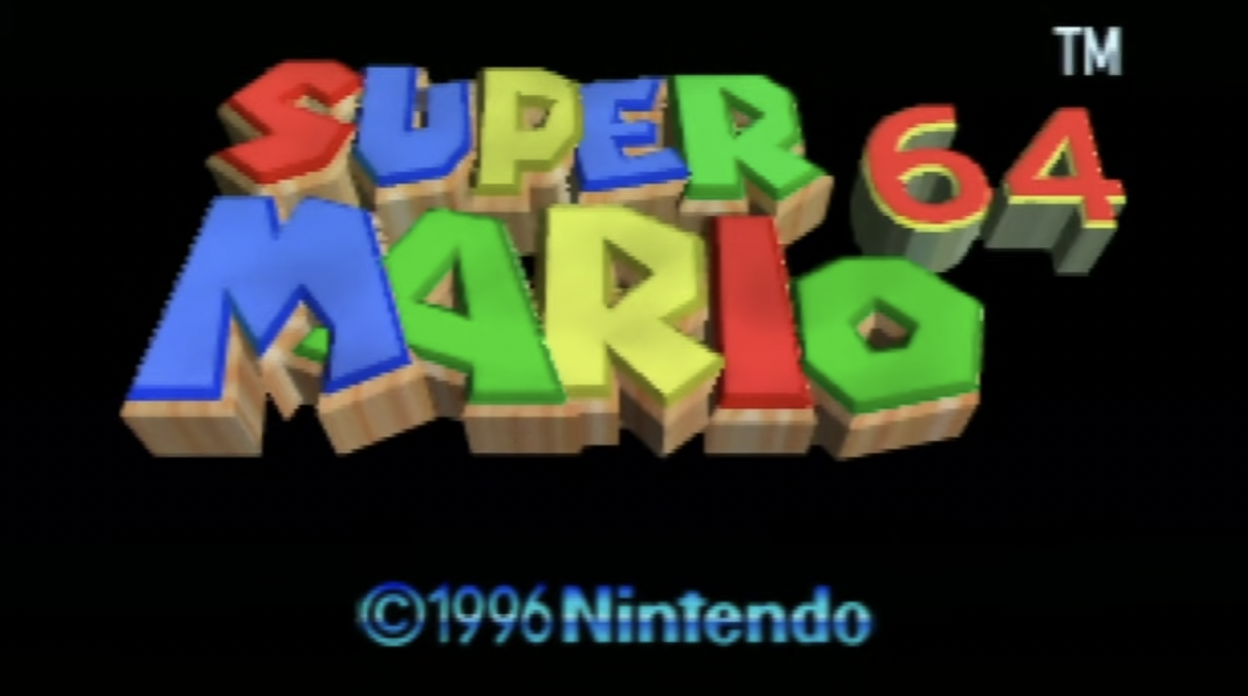Super Mario 64, released in 1998 for the Nintendo 64, places players in a world filled with castles, mushrooms, pipes, and enemies abound. While all these characteristics are fully reminiscent of the two-dimensional Mario scrolling platformers that preceded this game, Super Mario 64’s three-dimensional setting adds a level of complexity that changes the traditional platforming gameplay significantly. Super Mario 64 was among the first video games to provide a 3D platforming experience, following Geograph Seal (1994), Jumping Flash! (1995) and Floating Runner (1996). Due to the fact that developers were presenting a relatively new, complex, and unfamiliar gameplay style, Super Mario 64 manages to welcome players with specially crafted narratives and settings that encourage exploration and play with these new mechanics. Through the introduction of narratives that relate fully to new mechanics of this game, Super Mario 64 transforms the new camera rotation mechanic into a diegetic element of the game.
From the moment that players turn on the console and plug in the cartridge, Super Mario 64 encourages interactivity as you see Mario’s face staring out at you in gleaming three dimensions. With the press of a button and pull of the joystick, players can manipulate Mario’s larger-than-life features, pulling his nose and ears and releasing with a comedic spring back. From these very first moments, the game encourages trial and error, imbuing each action with a sense of humor and welcoming players into a new space with new mechanical possibilities.
The game opens to see a letter from Princess Peach, as she requests Mario to come visit her at the castle, a common trope in many Mario games. However, before the player is even able to locate Mario on the screen, a small, turtle-like character holding a camera appears, floating down on a cloud. The shot then pans across to follow this character, later revealed to be one of the Lakitu Bros., as he flies across to film Mario as he appears out of an iconic green pipe.

Though fairly unremarkable in character design, the presence and function of the Lakitu Bros. allows Super Mario 64 to provide players with a narrative explanation of a mechanic that contemporary players are so familiar with; the third-person camera view for a 3D game. As Mario appears, the Lakitu stops to explain his presence:

“Good afternoon. The Lakitu Bros., here, reporting live from just outside the Princess’s castle. Mario has just arrived on the scene, and we’ll be filming the action live as he enters the castle and pursues the missing Power Stars. As seasoned cameramen, we’ll be shooting from the recommended angle, but you can change the camera angle by pressing the arrow buttons…For now, reporting live, this has been the Lakitu Bros.”
This dialogue provides players with a distinct narrative, a live camera crew, in order to introduce the new camera angles which will be available to them. In this manner, players can imagine the Lakitu Bros. as the lens through which they see the game, maneuvering and automatically following Mario on his adventures left, right, forward, backward, up, or down through the new open-world settings he can explore. Even though the Lakitus are rarely seen beyond this point in the game, this imagery aids significantly in making a complex mechanic more accessible to players.
Players are able to toggle the camera views using the arrow buttons manually, or they are able to use the Lakitu camera setting to adjust for them as Mario moves around. In this manner, the automatic changes in perspective can be attributed to a character, rather than to an unspoken design feature of the game. In this manner, the camera mechanic becomes diegetic, as the camera itself is being held by the Lakitu and is within the narrative context of the game.

Players can also switch to Mario’s view, and when the camera feature is adjusted, players can see an icon of either Lakitu or Mario in the bottom right corner, emphasizing the attempt to make camera angles more approachable through the concept of a character’s physical presence. Since the mechanical changing of the camera is instilled within the narrative context of the game and is controlled by the user, this could be considered a diegetic operator action. In this case, by allowing the user control over the game mechanic while also remaining in line with the narrative, Super Mario 64 serves as an excellent example of how game mechanics might be interwoven within the game’s story in order to create a welcoming, enticing, and immersive gameplay experience.
When placing players in a new and complex setting, the attribution of brand-new game mechanics to characters or narrative can allow for an easier adjustment period for players, providing a tangible and real-world analog for game features. In this manner, the player can become more invested into the narrative of the game, rather than be distracted by the experienced and embodied differences between gameplay and reality. While the camera settings in Super Mario 64 are not infallible and are often hard to maneuver, the association between characters and mechanics can be utilized to welcome and engage players into the game-world that designers want them to engage in, an aspect which future game designers might look to in order to encourage enticing, welcoming, and immersive gameplay.
Bibliography
“Lakitu,” Super Mario Wiki, https://www.mariowiki.com/Lakitu#Super_Mario_64_/_Super_Mario_64_DS.
“Lakitu Bros.,” Super Mario Wiki, https://www.mariowiki.com/Lakitu_Bros.
“Platform Game,” Wikipedia, https://en.wikipedia.org/wiki/Super_Mario_64.
“Super Mario 64,” Wikipedia, https://en.wikipedia.org/wiki/Super_Mario_64.
“Super Mario 64 120 Star by Cheese05 in 1:45:19 – GDQx2018,” Games Done Quick, YouTube, https://www.youtube.com/watch?v=LV7SsyTI4u4.

